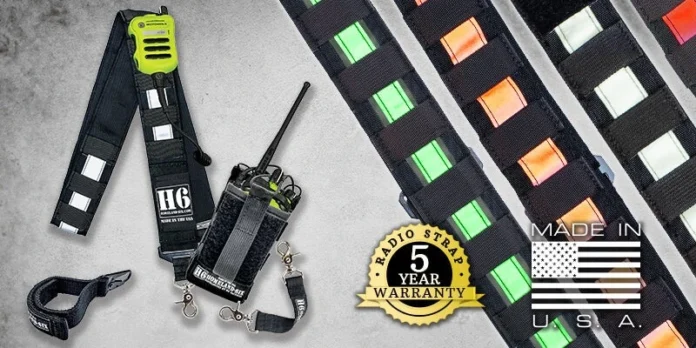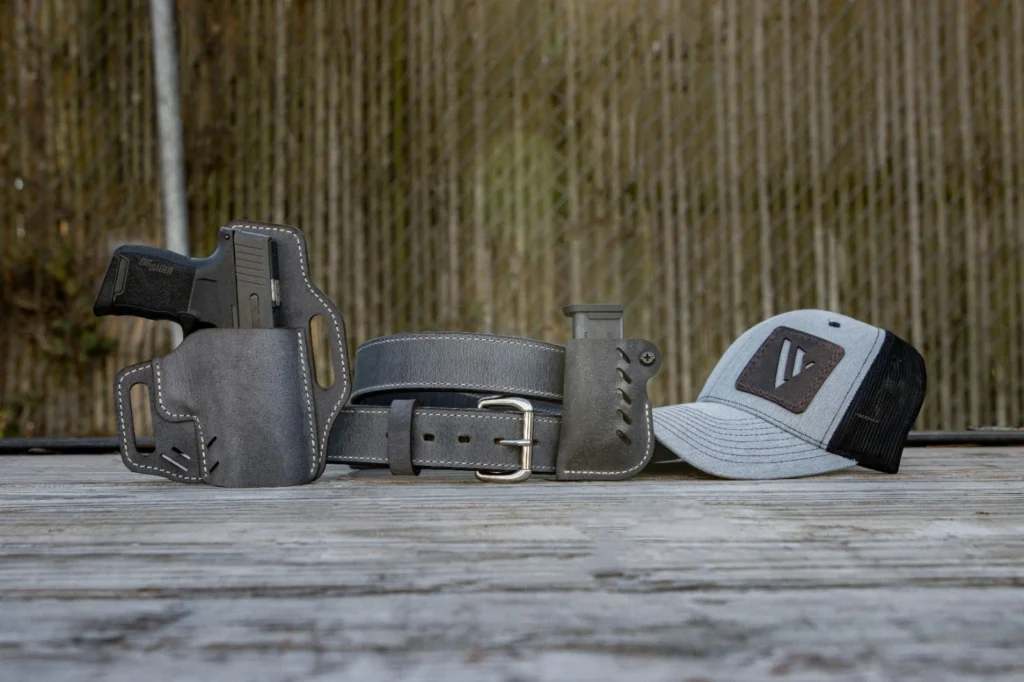
Let’s paint a picture.
You’re mid-call—structure fire, medical emergency, take your pick. You reach for your mic, and it’s nowhere. A second later, you feel your radio bounce against your hip as you kneel. It’s shifted, again. Now it’s tangled in your seatbelt. Or worse, the strap snapped altogether last week and you’re improvising with duct tape and a silent prayer.
Sound familiar?
Radio straps aren’t flashy. They’re not the star of your setup. But they’re the connective tissue between you and your most critical lifeline: communication. And if you’re relying on a flimsy or generic strap, you’re asking for trouble.
So what should a radio strap actually deliver? Here’s the short list—the features that separate functional from frustrating.
1. Tough-As-Hell Materials
This isn’t your dad’s dress belt. A real radio strap is built to endure flame, water, heat, friction, and the everyday chaos of the field.
– Full-grain leather or rugged ballistic nylon
– Stitching that can survive years of wear and torque
– Resistance to heat, mold, and UV exposure
Bottom line: If it breaks down faster than your turnout gear, it’s not worth wearing.
2. Adjustable Everything
Everyone’s built different. So why settle for a strap that treats you like a mannequin?
- Length adjustability is key for comfort over and under gear. Whether you’re 5’4” or 6’5”, your strap should sit where you want it—not where it defaults.
- Mic loop positioning should match your handedness and movement patterns. No more crane-neck contortions just to reach your comms.
- Holster orientation needs to be user-defined. Tilted toward your torso? Forward-facing? Side-mounted? You call the shots.
A strap that fits you reduces fumbling, fatigue, and field frustration. Every inch counts when seconds matter.
3. Holster Security That Moves With You—Not Against You
You don’t walk like a mannequin, so your gear shouldn’t either. A good radio strap supports:
- Secure retention: No bouncing, no slipping. Your radio stays put when you’re climbing, crawling, or sprinting.
- Quick access: You shouldn’t have to unstrap, unzip, or unlatch anything just to call in a code.
- Custom-fit options: Whether your department uses APX, BK, or another model, your radio shouldn’t rattle around in a one-size-fits-none pouch.
Some straps offer modular holsters to handle gear upgrades—worth considering if your department likes to “test new tech” every few months.

4. The Anti-Sway Strap (aka: Your New Best Friend)
Let’s talk motion control.
That annoying side-to-side swinging? The mic cord wrapping around your arm mid-run? That all goes away with one underrated hero: the anti-sway strap.
This little add-on anchors your main strap to your duty belt or turnout pant loop. It keeps your gear close and tight—no flopping, no bouncing, no shifting when you’re crouched, climbing stairs, or riding rescue.
Ask anyone who’s tried it. Once you go sway-free, there’s no going back.
5. Built-In ID & Reflective Features
It’s not about ego—it’s about visibility.
- Name and badge number embossing helps identify your gear in a pile of black straps.
- Reflective trim or patches improve visibility in smoke or low-light scenes.
- Removable or customizable ID panels let you update info without replacing the whole strap.
Little touches like these make life easier during equipment inspections, mutual aid responses, or chaotic shift turnovers.
6. Seamless Integration With Gear You Actually Use
Here’s the test: throw on your SCBA, duty vest, or jacket. Does your radio strap work with it—or work against it?
The best straps:
- Lay flat under or over gear without bulk
- Don’t interfere with SCBA straps or restrict arm motion
- Stay accessible even with gloves on and adrenaline pumping
Bonus points if the mic loop doesn’t disappear under your collar every time you move.
7. Real-World Design, Field-Tested Functionality
Let’s face it—some gear is built by designers who’ve never worked a shift.
The straps worth your time? They’re the ones developed with input from people who actually wear them. Not just for comfort, but for practical things—like how the strap breaks in over time, how it behaves when wet, and how it handles being thrown in the back of a rig five times a day.
If it looks cool but can’t survive three alarms and a medical assist, it belongs in a costume shop.
Final Take: If It’s Not Helping You, It’s Hurting You
A good radio strap should be a background player—a silent partner that lets you focus on the job, not the gear.
When it’s designed right, you’ll forget you’re even wearing it. When it’s not? You’ll be thinking about it all shift—and not in a good way.
So don’t settle for generic. Don’t go cheap. Choose a strap that respects your role and matches your pace. Your comms deserve it—and so do you.
Further Reading









